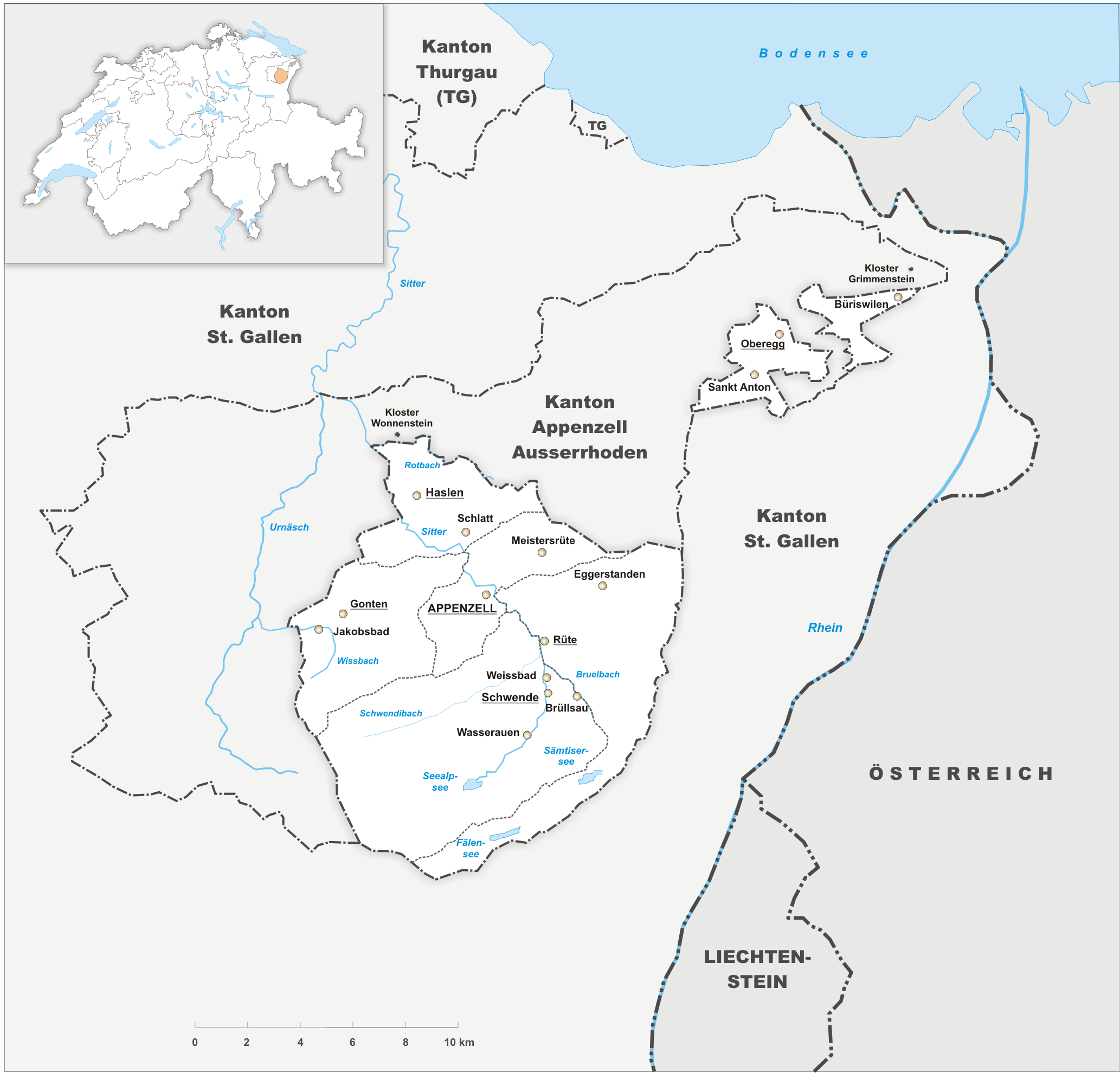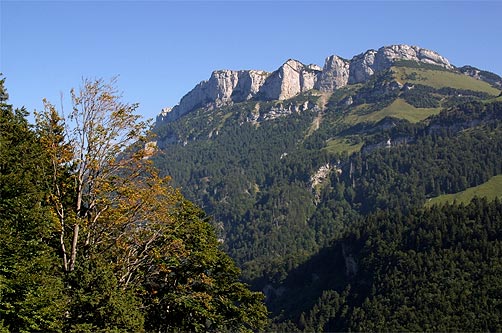|
Schwende-Rüte
Schwende-Rüte District is a district of the canton of Appenzell Innerrhoden in Switzerland. History Schwende-Rüte is formed in 1 May 2022 after the merger the districts of Rüte Rüte District was a district in the canton of Appenzell Innerrhoden in Switzerland. History Rüte is first mentioned around 1420-21 as ''Rütiner rod''. On 1 May 2022, the former districts of Rüte and Schwende merged to form the new distric ... and Schwende. Name The name refers to the two former municipalities. References External links Official website {{DEFAULTSORT:Schwende-Rüte Cultural property of national significance in Appenzell Innerrhoden Districts of Appenzell Innerrhoden ... [...More Info...] [...Related Items...] OR: [Wikipedia] [Google] [Baidu] |
Rüte
Rüte District was a district in the canton of Appenzell Innerrhoden in Switzerland. History Rüte is first mentioned around 1420-21 as ''Rütiner rod''. On 1 May 2022, the former districts of Rüte and Schwende merged to form the new district of Schwende-Rüte. Name The name ''Rüte'' goes back to ''Reuten'', which refers to the German word ''roden'' (wood clearing). The name originally comes from one of the two hamlets called ''Rüti''. Formation The municipality was formally established in 1872 and did not undergo major changes since then. Geography Rüte has an area, , of . Of this area, 55.7% is used for agricultural purposes, while 31.8% is forested. Of the rest of the land, 3.4% is settled (buildings or roads) and 9.1% is unproductive land. The district stretches from Altmann in the south to the hill country around the Hirschberg in the north. It includes the villages of Brülisau, Eggerstanden and Steinegg as well as portion of Weissbad between the Brüel, Sch ... [...More Info...] [...Related Items...] OR: [Wikipedia] [Google] [Baidu] |
Appenzell Innerrhoden
Appenzell Innerrhoden (; in English sometimes Appenzell Inner-Rhodes) (german: Kanton Appenzell Innerrhoden rm, Chantun Appenzell Dadens; french: Canton d'Appenzell Rhodes-Intérieures; it, Canton Appenzello Interno) is one of the 26 cantons forming the Swiss Confederation. It is composed of six districts. The seat of the government and parliament is Appenzell. It is traditionally considered a " half-canton", the other half being Appenzell Ausserrhoden. Appenzell Innerrhoden is the smallest canton of Switzerland by population and the second smallest by area. It is located in the north east of the country. Together with the canton of Appenzell Ausserrhoden, it forms an enclave within the canton of St. Gallen. The canton is essentially located in the Alpine foothills of the Alpstein massif, culminating at the Säntis. Appenzell Innerrhoden was part of the historical canton of Appenzell, which was divided into Appenzell Ausserrhoden (Protestant) and Appenzell Innerrhoden (Ca ... [...More Info...] [...Related Items...] OR: [Wikipedia] [Google] [Baidu] |
Schwende District
Schwende District was a district in the canton of Appenzell Innerrhoden in Switzerland. Name In the 12th century the name was recorded as ''Swendi'' or ''swandjan''. This is a derivate of the German expression ''schwinden machen'' (wood clearing). History Schwende first came into existence between 1204 and 1220. On 1 May 2022, the former districts of Rüte and Schwende merged to form the new district of Schwende-Rüte. Geography Schwende has an area, , of . Of this area, 48.1% is used for agricultural purposes, while 32.2% is forested. Of the rest of the land, 2.1% is settled (buildings or roads) and 17.6% is unproductive land. The district covers the portion of the half-canton which lies south-west of the Sitter river. It includes the settlement of Schwende as well as the western portion of Weissbad which is between the Sitter and south of the Brüelbachs. It also includes the village of Wasserauen as well as the majority of the Alpstein mountains to the peak of Mt. ... [...More Info...] [...Related Items...] OR: [Wikipedia] [Google] [Baidu] |
Countries Of The World
The following is a list providing an overview of sovereign states around the world with information on their status and recognition of their sovereignty. The 206 listed states can be divided into three categories based on membership within the United Nations System: 193 member states of the United Nations, UN member states, 2 United Nations General Assembly observers#Present non-member observers, UN General Assembly non-member observer states, and 11 other states. The ''sovereignty dispute'' column indicates states having undisputed sovereignty (188 states, of which there are 187 UN member states and 1 UN General Assembly non-member observer state), states having disputed sovereignty (16 states, of which there are 6 UN member states, 1 UN General Assembly non-member observer state, and 9 de facto states), and states having a political status of the Cook Islands and Niue, special political status (2 states, both in associated state, free association with New Zealand). Compi ... [...More Info...] [...Related Items...] OR: [Wikipedia] [Google] [Baidu] |
Cantons Of Switzerland
The 26 cantons of Switzerland (german: Kanton; french: canton ; it, cantone; Sursilvan and Surmiran: ; Vallader and Puter: ; Sutsilvan: ; Rumantsch Grischun: ) are the member states of the Swiss Confederation. The nucleus of the Swiss Confederacy in the form of the first three confederate allies used to be referred to as the . Two important periods in the development of the Old Swiss Confederacy are summarized by the terms ('Eight Cantons'; from 1353–1481) and ('Thirteen Cantons', from 1513–1798).rendered "the 'confederacy of eight'" and "the 'Thirteen-Canton Confederation'", respectively, in: Each canton of the Old Swiss Confederacy, formerly also ('lieu/locality', from before 1450), or ('estate', from ), was a fully sovereign state with its own border controls, army, and currency from at least the Treaty of Westphalia (1648) until the establishment of the Swiss federal state in 1848, with a brief period of centralised government during the Helvetic Republic ( ... [...More Info...] [...Related Items...] OR: [Wikipedia] [Google] [Baidu] |
Central European Time
Central European Time (CET) is a standard time which is 1 hour ahead of Coordinated Universal Time (UTC). The time offset from UTC can be written as UTC+01:00. It is used in most parts of Europe and in a few North African countries. CET is also known as Middle European Time (MET, German: MEZ) and by colloquial names such as Amsterdam Time, Berlin Time, Brussels Time, Madrid Time, Paris Time, Rome Time, Warsaw Time or even Romance Standard Time (RST). The 15th meridian east is the central axis for UTC+01:00 in the world system of time zones. As of 2011, all member states of the European Union observe summer time (daylight saving time), from the last Sunday in March to the last Sunday in October. States within the CET area switch to Central European Summer Time (CEST, UTC+02:00) for the summer. In Africa, UTC+01:00 is called West Africa Time (WAT), where it is used by several countries, year round. Algeria, Morocco, and Tunisia also refer to it as ''Central European ... [...More Info...] [...Related Items...] OR: [Wikipedia] [Google] [Baidu] |
Central European Summer Time
Central European Summer Time (CEST), sometimes referred to as Central European Daylight Time (CEDT), is the standard clock time observed during the period of summer daylight-saving in those European countries which observe Central European Time (CET; UTC+01:00) during the other part of the year. It corresponds to UTC+02:00, which makes it the same as Eastern European Time, Central Africa Time, South African Standard Time, Egypt Standard Time and Kaliningrad Time in Russia. Names Other names which have been applied to Central European Summer Time are Middle European Summer Time (MEST), Central European Daylight Saving Time (CEDT), and Bravo Time (after the second letter of the NATO phonetic alphabet). Period of observation Since 1996, European Summer Time has been observed between 01:00 UTC (02:00 CET and 03:00 CEST) on the last Sunday of March, and 01:00 UTC on the last Sunday of October; previously the rules were not uniform across the European Union. There were proposals ... [...More Info...] [...Related Items...] OR: [Wikipedia] [Google] [Baidu] |
Postal Code (Switzerland)
On 26 June 1964, Swiss Post introduced postal codes as the third country after Germany (1941) and the United States (1963). In Switzerland, the postal codes have four digits. As with the postcode system introduced in Germany in 1993, a municipality can receive several postcodes. A locality (settlement) having its own postal code does not mean that it is an independent political municipality, but only that it is an official locality. In addition, a postcode can include several political communes (e.g.: 3048 Worblaufen, includes parts of the communes of Bern and Ittigen) or several cantons (e.g.: 8866 Ziegelbrücke, includes parts of the cantons of Glarus and St. Gallen), which is why it is not possible to assign it unambiguously in both directions. In addition, it is often not possible to assign a unique postcode to post offices (post boxes) in larger cities. For this reason, six-digit postcodes are used internally. The Principality of Liechtenstein is also included in the Swiss p ... [...More Info...] [...Related Items...] OR: [Wikipedia] [Google] [Baidu] |
Community Identification Number
The Official Municipality Key, formerly also known as the Official Municipality Characteristic Number or Municipality Code Number, is a number sequence for the identification of politically independent municipalities or unincorporated areas. Other classifications for the identification of areas include postal codes, NUTS codes or FIPS codes. Germany In Germany the Official Municipality Key serves statistical purposes and is issued by the statistics offices of individual German states. The municipality key is to be indicated in instances such as changing residence on the notice of departure or registration documents. This is done at the registration office in every town's city hall. Structure The municipality key consists of eight digits, which are generated as follows: The designate the individual German state. The designates the government district (in areas without government districts a zero is used instead). The designate the number of the urban area (in a d ... [...More Info...] [...Related Items...] OR: [Wikipedia] [Google] [Baidu] |
Switzerland
). Swiss law does not designate a ''capital'' as such, but the federal parliament and government are installed in Bern, while other federal institutions, such as the federal courts, are in other cities (Bellinzona, Lausanne, Luzern, Neuchâtel, St. Gallen a.o.). , coordinates = , largest_city = Zürich , official_languages = , englishmotto = "One for all, all for one" , religion_year = 2020 , religion_ref = , religion = , demonym = , german: Schweizer/Schweizerin, french: Suisse/Suissesse, it, svizzero/svizzera or , rm, Svizzer/Svizra , government_type = Federalism, Federal assembly-independent Directorial system, directorial republic with elements of a direct democracy , leader_title1 = Federal Council (Switzerland), Federal Council , leader_name1 = , leader_title2 = , leader_name2 = Walter Thurnherr , legislature = Fe ... [...More Info...] [...Related Items...] OR: [Wikipedia] [Google] [Baidu] |
Cultural Property Of National Significance In Appenzell Innerrhoden
Culture () is an umbrella term which encompasses the social behavior, institutions, and norms found in human societies, as well as the knowledge, beliefs, arts, laws, customs, capabilities, and habits of the individuals in these groups.Tylor, Edward. (1871). Primitive Culture. Vol 1. New York: J.P. Putnam's Son Culture is often originated from or attributed to a specific region or location. Humans acquire culture through the learning processes of enculturation and socialization, which is shown by the diversity of cultures across societies. A cultural norm codifies acceptable conduct in society; it serves as a guideline for behavior, dress, language, and demeanor in a situation, which serves as a template for expectations in a social group. Accepting only a monoculture in a social group can bear risks, just as a single species can wither in the face of environmental change, for lack of functional responses to the change. Thus in military culture, valor is counted a typica ... [...More Info...] [...Related Items...] OR: [Wikipedia] [Google] [Baidu] |






